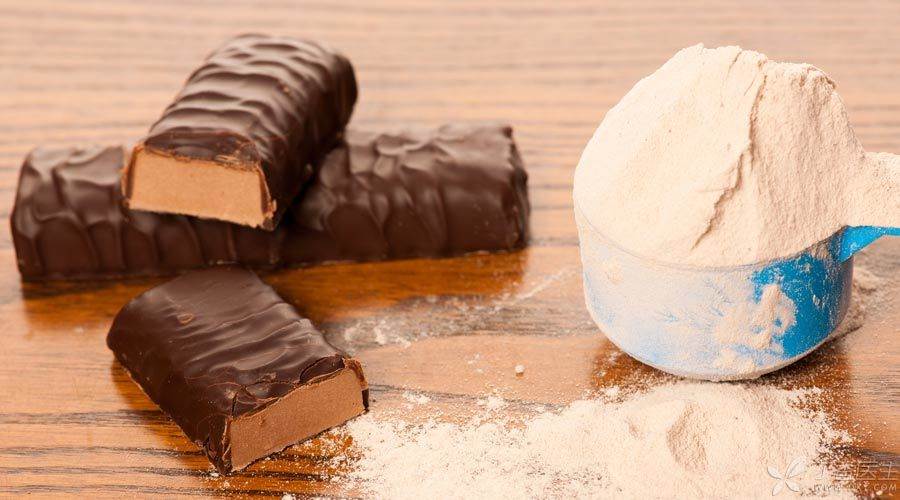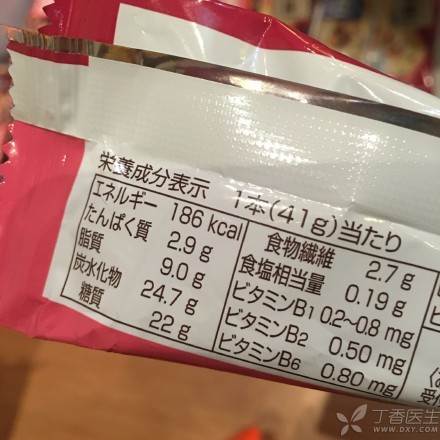
In order to satisfy everyone’s good wish of “eating and drinking can also be thin”, substitute diet products are selling like a raging fire. Among them, [low calorie and high fiber are convenient to carry] substitute rods have been strongly recommended by many fashionable people with good figure.
Can the substitute stick really play the role of [fairy stick], and can it really make you thin while eating?
Do you eat substitute bars, protein bars or energy bars?
First of all, no matter what you eat, what you eat is actually cakes/chocolates/puffed food!
[Meal Replacement Bars] [Energy Bars] are actually just attractive names given to these sticks by brand manufacturers, and are not standard national standard product classifications. Generally, they belong to these three categories:
- Pastry category (national standard GB/T 20977): Careful observation of the packaging shows that most [stick] foods belong to pastry, that is, they belong to the same category as chocolate pie, cookies, etc. Chocolate and Chocolate Products (National Standard GB/T 19343): A few products, such as the most familiar energy bar advertised as “Sweeping Hunger”; Expanded food (national standard GB/T 22699): For example, many grain bars, brown rice rolls, etc., the content of these general carbohydrates is not low.
Yes, face it! You are eating three snacks that you should not eat to lose weight, instead of [eating well] and getting energy.
Secondly, different product naming is related to different publicity strategies.
Meal substitute stick
Generally, the characteristics of high satiety, high fiber, low calorie, low fat and low glycemic index (GI) will be highlighted, with the focus on women who need slimming. It is sometimes called [slimming rod].
Energy bar
Emphasis is placed on publicizing the characteristics of fast energy supplement, high calorie and high GI. It is mostly recommended for marathon races, mountaineering and hiking, military operations and other special situations. The meeting owner recommends more professional sports and fitness groups.
However, the naming habits of the two are not always the same: the Energy Bar in Europe and the United States actually takes the route of high satiety and low calorie. Some food substitutes in Asia are high in calories and are energy bars for extreme athletes.
Protein bar
Because [high protein] sounds attractive, you will also see many sticks with soybean protein or whey protein as the main ingredient, which are called [protein sticks].
Nut stick
Some products may also be called [nut sticks] in order to highlight the nutrition and health benefits of nuts because the amount of nuts used in the raw materials is relatively prominent, that is, the kind that tastes very much like cut cakes.
In short, publicity belongs to publicity. You like to listen to what. It is called what.
Is the meal replacement stick effective in losing weight?
Advertising is confusing. To evaluate a food objectively, you need to look at the nutrition label and reevaluate it.
You will find that the nutritional ingredients of different substitute products are very different and cannot be generalized.
When we carry out nutrition evaluation on more than ten common meal replacement sticks, we will find that one meal replacement stick (regardless of weight difference):
- Calories range from 73 kilocalories to 330 kilocalories; Carbohydrate content ranges from 6g to 43g, mostly around 20g. The difference in dietary fiber is not small either, with the lowest being less than 1g and the highest being 16g, which is more than half of the daily recommended amount (25 ~ 35g). The difference in protein content is the largest, with the minimum containing only 1.4 g and the maximum containing as much as 33 g. The difference in fat content is less, between 5g and 13g.

The above picture takes this Japanese meal replacement stick as an example. If you translate this nutrition label to everyone, it reads as follows:
1. The calorie of a single substitute stick is very low, and it can really starve and lose weight.
A small 41-gram meal replacement stick contains 186 kilocalories, which is really much less than the 500-700 kilocalories of a normal meal.
Even if you eat two at a meal and look at energy alone, you may be hungry and thin.
2. The content of fat and sugar is high, but the protein is very low.
However, each 9 grams of fat is quite a lot, accounting for 15% of the daily recommended upper limit of fat intake (60 grams); The protein is also pitifully low, 2.9 g is less than half an egg. There is also a terrible sugar content of 22 grams, which is close to half of the daily sugar limit (50 grams). Isn’t this a candy bar?
Too low calories, unbalanced nutrients, too much sugar and too much fat are not conducive to weight loss, not to mention the basic balanced diet, nutrition and health.
3. Dietary fiber can barely
However, a dietary fiber containing 2.7 grams is barely good, and it is a delaying tactic when vegetables are completely unavailable.
4. Satisfaction is not necessarily strong
What about the propaganda of “high satiety” and “anti-hunger ability”? In terms of personal experience, it is not so magical. Large meal substitutes with high protein content will feel slightly fuller, but they will last for 3 or 4 hours at most.
Conclusion: Meal replacement stick can temporarily appease hunger. You may be hungry and thin due to lack of energy, but it is not a good choice for weight loss meals.
What’s more, a foreign experiment in 2001 found that among the 30 food substitutes on the market, 18 did not match the nutrition label, with a quarter of the fat content exceeding the label value and more than half of the carbohydrate content exceeding the label value. The most exaggerated one said on the package that it contained 2 grams of carbohydrate, and the measured value was 22 grams.
Can what people eat substitute sticks when they are in what?
We absolutely do not recommend replacing dinner with substitute products for a long time, let alone eating substitute sticks as snacks. Only in a few cases can it be used as an option:
1. Time is urgent
If it is really too late to eat in a hurry, it is still much better to eat a substitute stick, supplement energy and prevent hypoglycemia than not to eat and be hungry at all.
Step 2: Match fruits and vegetables
Nutrients in the substitute stick will also be lost during processing, and they are generally short of vitamins. When eating or on the same day, vegetable salad or some fruits (such as small tomatoes) can be added as supplements, and a balanced diet is better.
3. Before and after fitness
Many bodybuilders have a protein-rich meal replacement stick before and after heavy anaerobic training, which can really help muscle recovery. A delicious meal replacement stick is also a reward for hard training.
Several Key Points of Choosing Meal Replacement Bar
If you have to choose to eat a substitute stick, try to do these things:
1. Try to choose big brands
It can prevent the label information from being inconsistent with the actual situation.
2. Learn to read nutrition labels
Select products with a single calorie of less than 300 kilocalories, less than 5 grams of fat and less than 10 grams of sugar. If the protein is more than 10g and the dietary fiber is more than 3g, it is even better.
3. Choose a single one with small weight
This is more conducive to controlling intake. In addition, some meal substitutes will use sugar alcohol and other sweeteners instead of sucrose. If you eat a large one at a time, it is also easy to cause flatulence and farting.
4. Pay Attention to Functional Meal Replacement Sticks
Some functional meal substitutes will add additional minerals for nutrition enhancement. If you usually have the habit of taking nutritional supplements, you should pay attention to the total amount of nutrients and avoid excessive intake.
